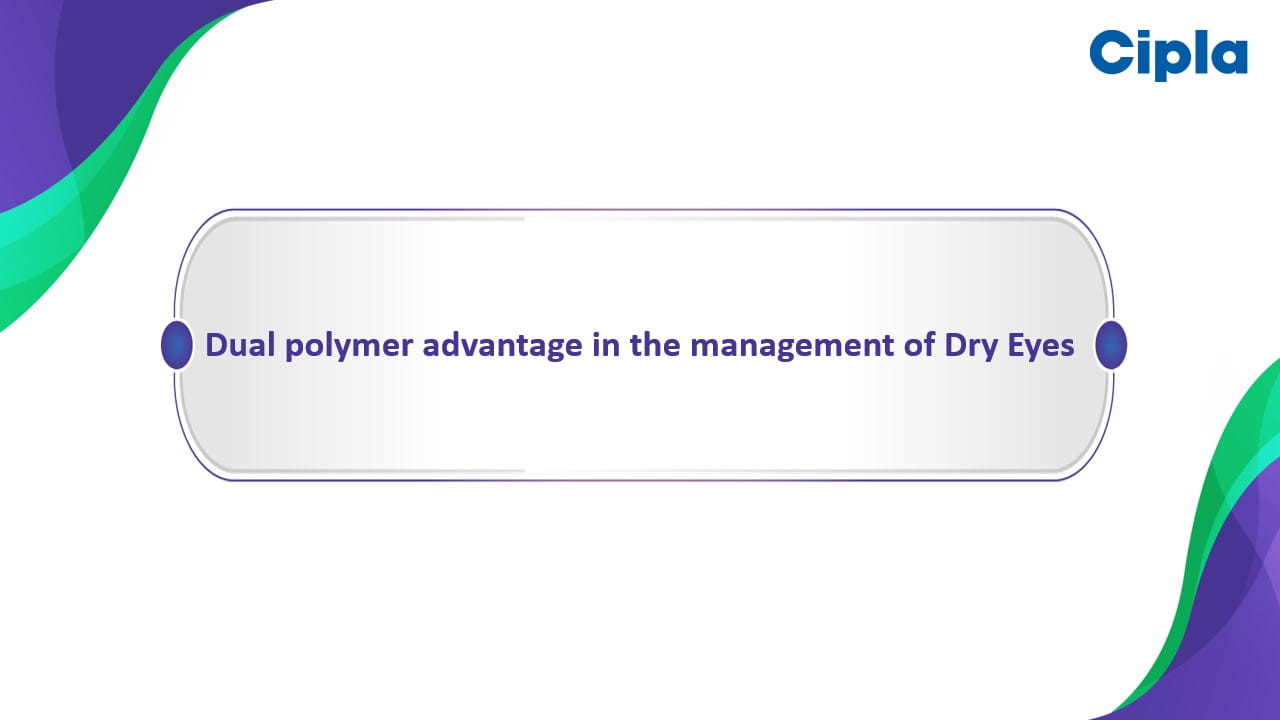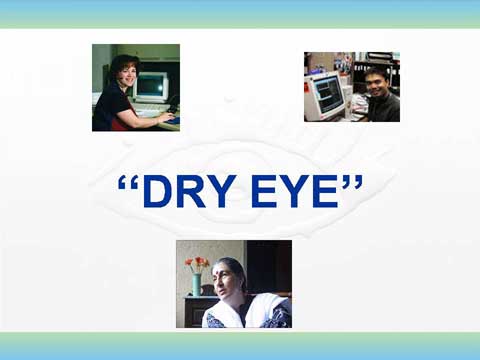ESCRS 2025: Ocular Surface Disease
The Effect of Antioxidant Supplement Use on Oxidative Stress and Ocular Surface Parameters in Ocular Rosacea
Presenter: Ahmet Selcuk Cobanoglu
A prospective study at Ankara Bilkent City Hospital evaluated antioxidant supplementation in 30 ocular rosacea (OR) patients versus 30 matched controls. Baseline tear and serum total oxidant status (TOS), total antioxidant status (TAS), oxidative stress index (OSI), tear breakup time (TBUT), Schirmer-1 score, meiboscore (MBS), and Ocular Surface Disease Index (OSDI) were assessed.
Patients received oral alpha-lipoic acid (600 mg/day) for three months. After one month, TAS and TBUT improved significantly, while TOS, OSI, MBS, and OSDI decreased (p<0.05); these gains increased at 3 months. Schirmer scores rose significantly at three months. Oxidative stress markers normalized to control levels, though some ocular surface parameters remained impaired. Antioxidants reduced oxidative stress and enhanced ocular surface health in OR.
Ocular Surface Disease and its Impact in Patients Treated with Dupilumab: Clinical Findings and Patient-Reported Symptoms
Presenter: Rita Teixeira-Martins
A single-center retrospective study at ULS São João, Porto, assessed ocular surface changes in 36 patients treated with dupilumab for ≥6 months. Indications included atopic eczema (56%), severe asthma (22%), and nasal polyposis (11%). Clinical findings showed posterior blepharitis (42%), conjunctival hyperemia (50%), and corneal limbal neovascularization (8%), with ectropion and episcleritis as notable complications.
Patient-reported symptoms via the Dupilumab-associated Ocular Surface Disease Activity Assessment Questionnaire included light sensitivity (64%), blurry vision (64%), and itchiness (39%). Almost half (47%) required emergency ophthalmology visits; most needed ocular medication, with only 57% improving. Ocular surface disease is a common dupilumab adverse effect, often with discordant signs and symptoms.
Corneal Morphology Changes after Intense Pulsed Light Therapy in Dry Eye Disease
Presenter: Gabriel Santos
A prospective study at Centro Hospitalar Universitário de Santo António, Portugal, evaluated corneal morphological changes following intense pulsed light (IPL) treatment in 53 patients (106 eyes) with dry eye disease (DED). Using swept-source optical coherence tomography and advanced ocular surface analysis, significant improvements were observed in Oxford staining score, blink rate, lipid layer thickness, meibography, and symptom severity measured by OSDI-12.
Notably, stromal thickness increased significantly by 1.8 µm (p=0.009), whereas epithelial thickness showed no significant change. These results suggest IPL promotes beneficial stromal remodeling without altering epithelial morphology, highlighting its potential therapeutic role in managing DED and improving ocular surface health.
Therapeutic Efficacy and Safety of Non-Invasive Radiofrequency Treatment in Patients with Refractory Meibomian Gland Dysfunction: A Randomized Controlled Trial
Presenter: Po Yin Wu
A single-center, double-masked, randomized, sham-controlled trial evaluated the clinical efficacy and safety of radiofrequency (RF) treatment followed by meibomian gland expression (MGX) in 26 patients with refractory meibomian gland dysfunction (MGD)–related dry eye disease. Patients received 80 RF shots per session with energy between 2.5–3.5.
At three months, significant improvements were observed in SPEED score (9.35 vs. 13.12, p<0.05), non-invasive keratographic break-up time (NIKBUT), ocular redness, and meibum expressibility. No significant changes occurred in tear meniscus height or meibum quality. Post-treatment erythema resolved rapidly. RF plus MGX appears safe and potentially effective for refractory MGD-related dry eye.
Lebrikizumab Induced Ocular Surface Disease: A Prospective Case Series
Presenter: Davina Jugnarain
A prospective case series at Barts Health NHS Trust, UK, evaluated lebrikizumab-induced ocular surface disease (LIOSD) in 18 adults with moderate-to-severe atopic dermatitis (AD). LIOSD developed in 55.6% of patients, with a median onset of 6.2 weeks after starting treatment. Patients had a median age of 43 years and equal male-to-female ratio.
Severe AD and presence of eyelid or facial eczema were the strongest LIOSD risk factors. Most presented with bilateral conjunctival inflammation and blepharitis; none discontinued lebrikizumab. LIOSD appears more common and rapid in onset compared to other monoclonal antibodies, but typically responds well to topical therapies.
Tear Fluid Inflammatory Markers and Ocular Surface Findings in Pediatric Patients with Ocular Rosacea
Presenter: Irem Onal
A prospective study at a tertiary ophthalmology clinic assessed tear inflammatory markers in 30 pediatric ocular rosacea patients versus 28 healthy controls. Patients showed significantly reduced tear break-up time (TBUT), non-invasive TBUT, and increased meibomian gland area loss and ocular surface staining (p<0.001).
Tear levels of IL-1β, MCP-1, IL-6, and IL-8 were significantly elevated in patients. Corneal scarring/ulceration correlated positively with IL-1β, TNF-α, and IFN-γ, while MCP-1 was associated with chalazion presence. These findings suggest inflammation contributes to disease severity and highlight the importance of monitoring cytokines for potential therapeutic targeting in pediatric ocular rosacea.
Understanding Molecular Pathways in Non-Responding Dry Eye Disease and its Therapeutic Intervention
Presenter: Deepthi R H
A prospective study at a tertiary ophthalmology center evaluated 1,250 dry eye disease (DED) patients to identify and treat biomarkers in 223 treatment non-responders (NR-DED). Tear samples were analyzed for biomarkers including MMP-9, IL-6, IL-1β, ICAM-1, IL-10, IL-17a, and TNF-α using a customized BMP kit and AI-generated DED database to guide targeted therapy.
Among the 223 NR-DED patients, 60% of eyes showed elevated MMP-9, with 12% having a 1-fold rise, 18% a 2-fold rise, and 30% a 3-fold rise. Eyes with 1-fold MMP-9 elevation received immunomodulators; those with ≥2-fold elevation received combined vector pulsation/intense pulsed light plus immunomodulators. Additionally, 10% of eyes with high ICAM-1 were treated with lifitegrast, and 20% with elevated TNF-α and IL-17a received steroids and lubricants.
After six months of biomarker-specific therapy, 97% of NR-DED eyes exhibited significant symptom and sign reduction, lower biomarker levels, faster drug response, and decreased treatment failure.
Hashimoto's Thyroiditis and Dry Eye Disease
Presenter: Karla Ranđelović
A study at University Hospital Center Sisters of Mercy, Croatia, assessed tear biomarkers and ocular parameters in 150 participants divided into Hashimoto’s thyroiditis (HT), dry eye disease (DED) without HT, and healthy groups. Over half exhibited DED, with 48.15% of HT patients showing severe symptoms. IL-6 levels were significantly elevated in the HT-DED subgroup compared to non-HT DED (p=0.010), suggesting a link to HT-related DED.
MMP-9 was raised in both DED groups but not HT-specific. The HT-DED subgroup had reduced IL-10 (p=0.008) and increased lissamine green staining and LIPCOF scores (p<0.001). Findings highlight IL-6’s role and the diagnostic value of staining and LIPCOF in HT-associated DED.
Effect of Hormonal Changes in Polycystic Ovary Syndrome (PCOS) on Dry Eye Disease
Presenter: Andrew William Makowski-Hoyle
A retrospective study from India evaluated dry eye signs, symptoms, and hormonal influences in 51 patients (97 eyes), including 16 with polycystic ovary syndrome (PCOS), 25 with polycystic ovaries (PCO), and 10 healthy controls. The PCOS group had significantly higher Ocular Surface Disease Index (OSDI) scores, faster tear break-up time (BUT), and more corneal staining than PCO and controls (p<0.05).
No differences were found in Schirmer’s test. Elevated luteinizing hormone, testosterone, and estradiol levels were noted in PCOS, with testosterone inversely correlating with BUT. After six months of systemic anti-androgen therapy, PCOS patients showed improved OSDI and BUT. Hormonal imbalance in PCOS may contribute to dry eye, with treatment offering symptom relief.
Impact of Dose Modifications on Ocular Adverse Events in Phase 3 Mirasol Trial of Mirvetuximab Soravtansine-Gynx Vs Investigator’S Choice Chemotherapy in Recurrent, Folate Receptor Alpha -Positive, Platinum-Resistant Ovarian Cancer
Presenter: Amadeu Carceller Guillamet
In the MIRASOL phase 3 trial evaluating mirvetuximab soravtansine (MIRV) for FRα-positive platinum-resistant ovarian cancer, 218 patients receiving ≥1 MIRV dose were assessed for treatment-emergent ocular events (TEOEs). Fifty-six percent experienced TEOEs, commonly blurred vision (45%), keratopathy (37%), dry eye (28%), and cataract (16%). Most TEOEs (93%) completely or partially resolved.
Dose reductions due to TEOEs occurred in 35%, mainly for blurred vision and keratopathy, with nearly half achieving complete resolution post-reduction. Median time to first dose-reduction event was 53 days. Recurrent TEOEs were mostly mild with no grade ≥4 events. Only 2% discontinued due to ocular AEs. These findings confirm ocular AEs from MIRV are manageable with ophthalmic care and dose modifications, supporting treatment continuation.
Clinical Evaluation of Exosome Eye Drops from Wharton’S Jelly Mesenchymal Stem Cells for Dry Eye Disease Treatment
Presenter: Hossein Aghamollaei
A prospective clinical trial at Vision Health Research Center, Semnan University, Iran, evaluated the safety and efficacy of Wharton’s jelly mesenchymal stem cell (WJ-MSC)–derived exosome eye drops in 13 patients (26 eyes) with moderate to severe dry eye disease (DED). Administered every six hours for three months alongside existing treatments, no adverse effects were reported.
Significant improvements included tear meniscus height (TMH) increasing from 16.6 ± 2.3 µm to 23.2 ± 3.3 µm, non-invasive tear break-up time (niBUT) extending from 4.22 ± 2.99 to 6.79 ± 2.93 seconds, and Schirmer test results improving from 5.53 ± 4.33 mm to 8.30 ± 3.46 mm. Ocular Surface Disease Index (OSDI) scores declined from 33.11 ± 14.50 to 20.98 ± 11.69.
Additional benefits included decreased ocular redness, improved meibomian gland dysfunction (MGD) and Ocular Surface Inflammatory Risk Evaluation (OSIE) scores, best-corrected visual acuity (BCVA) improving from 8/10 to 9/10, uncorrected visual acuity (UCVA) from 7/10 to 8/10, and enhanced contrast sensitivity.
Phase 2A Multicenter Clinical Trial to Determine the Feasibility and Safety of the use of Adipose-Derived Mesenchymal Stem Cells in the Treatment of Patients with Cicatricial Conjunctivitis
Presenter: Nicolas Alejandre
A prospective multicenter Phase IIa trial evaluated subconjunctival injections of allogenic adipose-derived mesenchymal stem cells (MSCs) in 20 patients with active cicatricial conjunctivitis due to mucous membrane pemphigoid (MMP), Lyell’s syndrome, and Stevens-Johnson syndrome (SJS). Patients received one or two injections alongside standard treatment and were followed for six months. No severe adverse events occurred; minor issues included limited symblepharon and short-term hyperemia.
Significant improvement in Ocular Surface Disease Index (OSDI) scores was observed at 1 and 3 months, with maintained but nonsignificant improvement at 6 months. Conjunctival inflammation showed a positive trend. The therapy appears safe and feasible for mild/moderate MMP and SJS, warranting Phase IIb/III trials.
Efficacy of Propylene Glycol-Hydroxypropyl-Guar Nanoemulsion Lubricant Eye Drops on Evaporative Dry Eye Disease: A 6-Month Clinical Study
Presenter: Tzu-Chen Lo
A prospective, single-center clinical trial evaluated propylene glycol-hydroxypropyl-guar (PG-HPG) nanoemulsion lubricant eye drops in 30 adults (average age 41.97 ± 13.78 years; 93% female) with mild to moderate evaporative dry eye disease (DED). Participants, with baseline Ocular Surface Disease Index (OSDI) scores of 13-32, tear break-up time (TBUT) ≤10 seconds, corneal staining ≤8 spots, Schirmer I test ≥10 mm, and lipid layer thickness (LLT) between 45-73 nm, applied the eye drops four times daily for six months.
After treatment, OSDI scores significantly decreased from 29.56 ± 7.78 to 14.18 ± 7.79 (mean reduction 15.49 ± 9.32, p<0.01). TBUT improved from 3.24 ± 2.44 to 4.15 ± 3.27 seconds (p=0.03), and meibomian gland expressibility improved from 0.37 ± 0.58 to 0.15 ± 0.43 (p=0.01). LLT showed a non-significant improving trend, while meibum quality, visual acuity, blink rate, and corneal staining remained unchanged.
These results demonstrate PG-HPG nanoemulsion drops effectively reduce symptoms and improve key clinical signs in mild to moderate evaporative DED, supporting their long-term use.
European Society of Cataract and Refractive Surgeons (ESCRS) Congress 2025, September 12-16, Denmark




